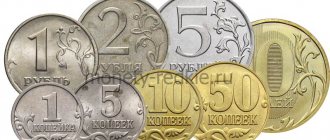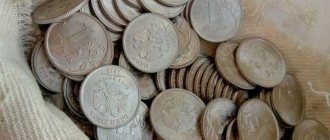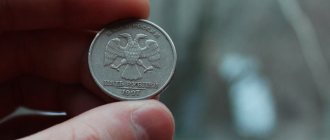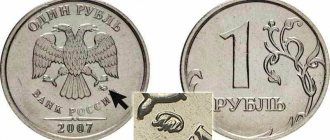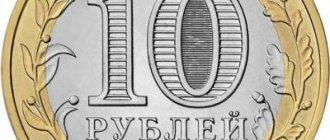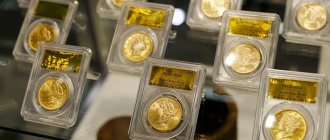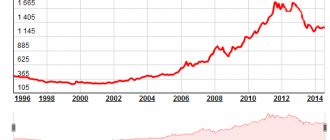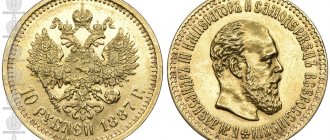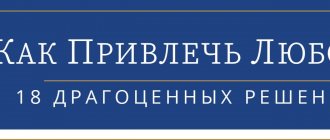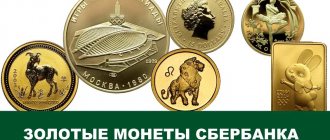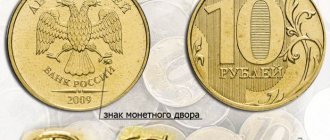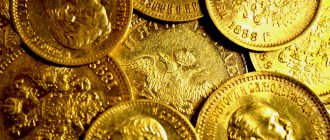Regular issue of coins with a face value of 1 kopeck in modern Russia was carried out from 1997 to 2009. Subsequently, there were also episodic releases in 2011, 2014 and 2021.
Typically, the price of one-kopeck Russian coins in the numismatic world is only slightly higher than the face value. But if the specimens are highly preserved, then their price is 10-50 rubles. Although there are exceptions, read about them below.
The coins were minted at two Russian enterprises - MMD (Moscow Mint) and SPMD (St. Petersburg Mint). Mint affiliation is determined by the letters under the front hoof of the horse depicted on the obverse of the coin. There you will find the letters “SP” or the sign “M”.
Left – “SP”, right – “M”
Note that according to numismatic catalogs, kopecks with the letters SP are considered more expensive (their price is 2-3 times higher than in Moscow), but in practice the differences in cost are not so significant.
The most expensive and valuable coins of the USSR
Collectors have probably appeared since time immemorial. Gradually, the list of items they collected expanded. The moment came when the coins hit him. Numismatists have existed since then. These people are sometimes ready to give so much for some rare old coin that for an ignorant person it will seem like a waste of money. But this ignorant person has the opportunity to open his grandmother’s old piggy bank and make good money. After all, the cost of some Soviet coins can be several hundred thousand rubles.
Chervonets
Perhaps it should be recognized that the list of Soviet coins that are the most valuable is headed by the famous chervonets, which heads the catalog of expensive coins of the USSR. It began to be produced in 1923. On one of its sides the name of the country is indicated - the RSFSR. True, this was just a political formality. Chervonets was used in foreign economic calculations; it was almost not involved in circulation within the country.
However, it was not particularly in demand on the foreign market. There they trusted the “royal” gold to a greater extent. For this reason, Soviet chervonets were withdrawn from circulation, melted down and minted into pre-revolutionary coins. This became the reason for the rarity of the Soviet chervonets. There are not many coins left from the nearly three million circulation. Nowadays, the price of a gold chervonets from 1923 exceeds 150 thousand rubles per coin. Of course, we are talking about a collector's price.
2 kopecks
A coin with a denomination of 2 kopecks, made in 1925, is recognized as rare. In 1924, several large editions of coins were minted (the monetary reform began). Then coins, the material of which was copper, began to be produced in small editions. For this reason, a 2-kopeck coin minted in 1925 costs almost 60 thousand rubles in our country. By the way, numismatists learned about this rarity only in the middle of the last century, when one of them discovered it.
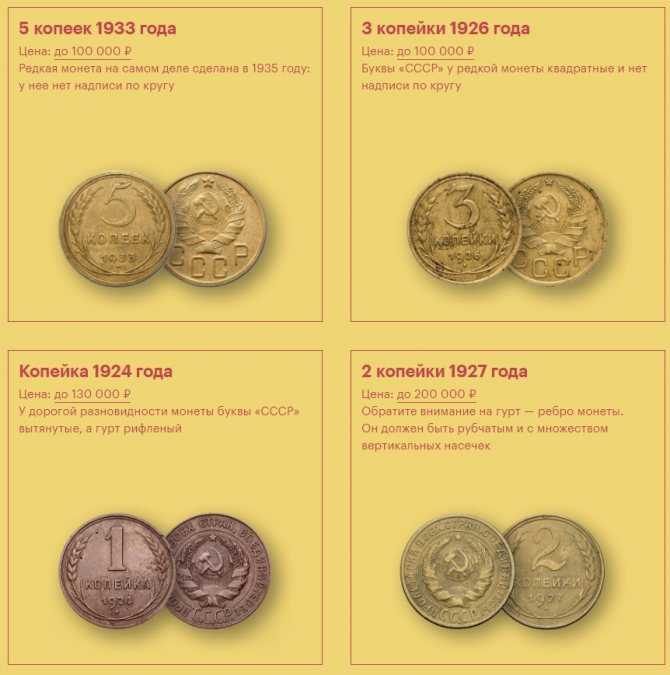
Photo: Tinkoff Journal
But there is a 2-kopeck coin, the price of which is even higher. This is the one that was produced in 1927. Its price exceeds 100 thousand rubles.
Coins with denominations of 10, 15 and 20 kopecks, issued in 1931, have a high value. They are silver. At that time, the country's population began to trust Soviet coins more. This was the reason that instead of silver, they began to use a copper-nickel alloy for their manufacture. There are very few silver coins of the named denominations and year of issue. Mostly in collections you can find 20-kopeck coins. Their cost is usually more than 150 thousand rubles.
20 kopecks
The next 20 kopeck coin, made in 1934, can be seen in a late remake version. Its cost exceeds 100 thousand rubles. There are very few original coins. The reason for its rarity is the intricate design. On the plane there is an image of a worker with a hammer, along the circle the full name of the country. The result was an abundance of marriage. The coins were no longer issued, they were withdrawn from circulation and destroyed.
5, 10 and 15 kopecks
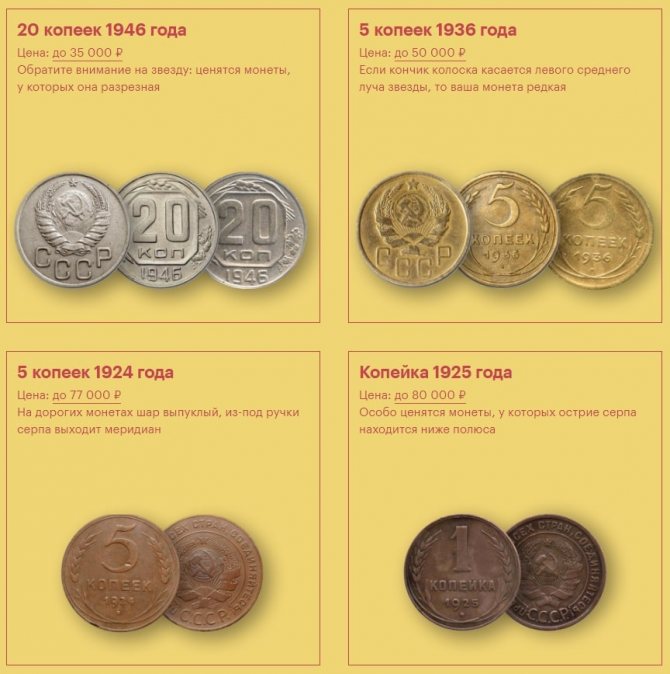
A coin with a face value of 5 kopecks, made in 1933, has a value from 20 thousand rubles to 100 thousand. The same one, produced in 1924 and 1935, sells for 9 thousand rubles.
Coins in denominations of 10 and 15 kopecks made in 1942 are very rare. They are sold for 15 thousand rubles. This is explained by problems that occurred due to the move of the mint from Leningrad to Krasnokamsk (Ural).
Table of expensive and rare coins of the USSR: denomination, year of issue, number of issued coins of a given denomination per year
These coins were minted in limited quantities and are therefore highly valued.
| Year of issue | 5 kopecks | 10 kopecks | 15 kopecks | 20 kopecks |
| 1965 | 4000 | 4500 | 4500 | 4500 |
| 1966 | 4000 | 4500 | 4500 | 4500 |
| 1967 | 1600 | 1700 | 1500 | 1500 |
| 1968 | 4000 | 2000 | 2000 | 2000 |
| 1969 | 1100 | 50 | 4000 | 4000 |
| 1970 | 9000 | 30 | 16000 | 8000 |
| 1971 | 3000 | 10 | 8000 | 6000 |
| 1972 | 3000 | 10 | 8000 | 6000 |
| 1973 | 600 | 10 | 8000 | 8000 |
| 1974 | 60 | 10 | 2000 | 2000 |
| 1975 | 60 | 30 | 2100 | 2300 |
| 1976 | 40 | 5 | 50 | 4500 |
Coins of 1947
The rarest and most expensive Soviet coins made in 1947. This applies to all denominations. The total circulation exceeded 500 million, but almost all the coins were later melted down. The reason is unknown. We can only clarify that the new coat of arms of the USSR was approved in the summer of 1946, and it first began to appear on coins in 1948. Because of this, very few coins from the 1947 issue remain, and even those became exhibits at exhibitions. In 2008, a complete set of such coins was purchased at auction for more than 200 thousand euros. This is more than a million rubles per unit. A summary of the information is given in the table below.
1958 coins
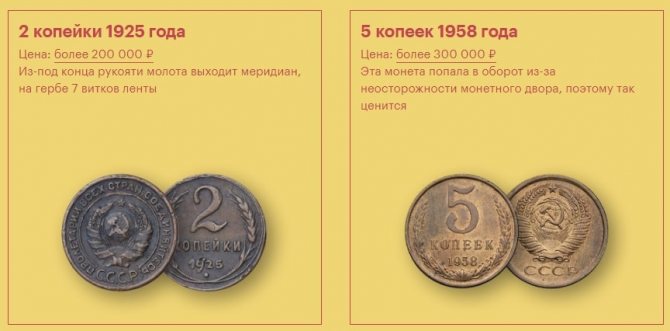
Numismatists also value coins from 1958. Then, in addition to the usual denominations, 2-3 and 5-ruble denominations appeared. It is known that in 1961 a monetary reform was carried out. But it was planned to be held back in 1958. By this time, the required number of coins had been produced and sent to the field. However, something went wrong. The reform was not carried out. The State Bank of the USSR demanded the return of the coins. However, a small part with denominations of 1, 2, 3 and 10 kopecks ended up in circulation. Now the average price of 1.2 kopeck coins is 150 thousand rubles, 3 kopeck coins - 60 thousand, 10 kopeck coins - 40 thousand rubles. The cost of other coins from 1958 reaches 3.5 million rubles.
| Year | List | Price, in rubles |
| 1947 | 1, 2, 3, 5, 10, 15, 20 kopecks | 12,000,000 per set |
| 1958 | 1 kopeck | 60 000 |
| 2 kopecks | 60 000 | |
| 3 kopecks | 40 000 | |
| 5 kopecks | 120 000 | |
| 10 kopecks | 40 000 | |
| 15 kopecks | 120 000 | |
| 20 kopecks | 120 000 | |
| 50 kopecks | 180 000 | |
| 1 rub | 180 000 | |
| 2 rubles | 120 000 | |
| 3 rubles | 270 000 | |
| 5 rub | 100 000 |
How much do rare varieties cost?
In some cases, items from the same mint and year may have slight differences in the images. Coins with such differences are called varieties.
Varieties that are less common will cost more. Here are a few examples of such varieties.
1 kopeck 1997 SP has three varieties on the reverse. Only two of them are found in circulation. This is a piece. 1.1. and pcs. 2.1
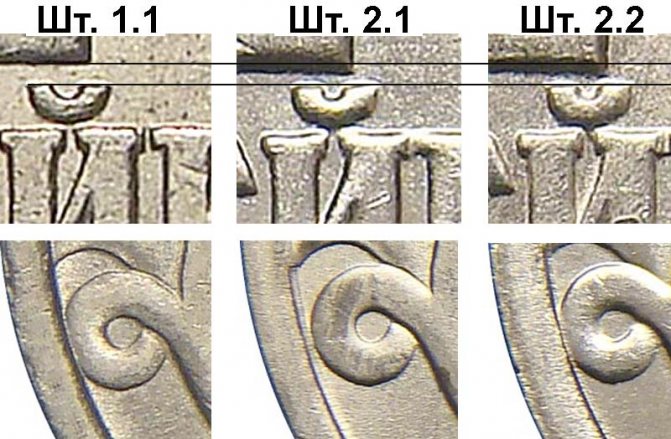
Option pcs. 1.1. (left) is more valuable.
Variety piece 1.1 is considered rare, it costs up to 250 rubles. It differs from others in the removed bow of the letter “Y”, as well as in the curl pressed to the edge. See the photo above for the differences between this variety and pcs. 2.1
1 kopeck 1998 SP also has three versions of the reverse image (piece 1.1., piece 2.1 and piece 2.2). You should look for a variety with stamp 1.1., which is very rare and valuable for this year of release. It costs around 2000 rubles. See the image above for the differences between the three varieties.
1 kopeck 2001 SP . For almost 20 years it was believed that this coin had no varieties. But in 2021, it was established that the “SP” sign on the obverse of the coin can have two position options. The case (item B), when the letters are turned clockwise and raised towards the hoof, is unique. So far, only a few such copies have been found, so the cost is more than 15 thousand rubles. As new copies are found, the cost will decrease.
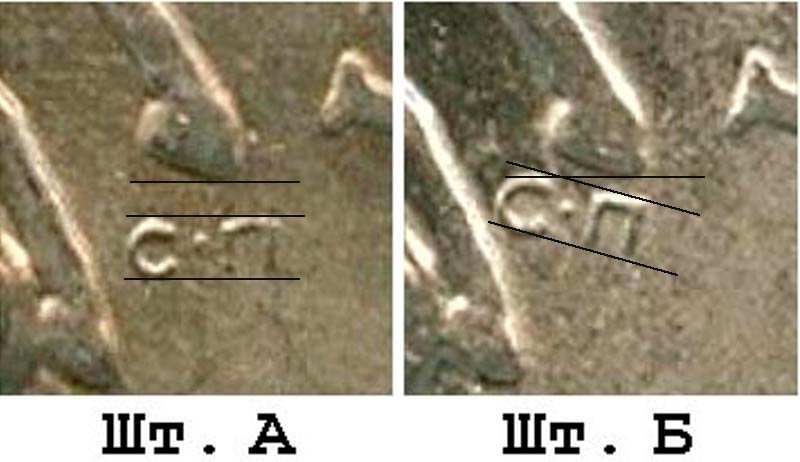
If you are interested in the varieties of one-kopeck coins, we recommend that you find Alexander Stashkin’s catalog on the Internet, which most fully describes the variant images of modern Russian banknotes, indicating their rarity.
The most expensive coins of the Soviet Union - execution errors
Quite expensive coins are “mix-ups”. They are called so because their obverse side was intended for a coin of a different denomination. Their cost ranges from 30 to 50 thousand rubles. The most special and most interesting are the erroneous ones. This is the name for coins whose obverse was stamped with the old coat of arms. It is known that from 1924 to 1957 the coat of arms of the USSR changed 4 times. The difference is noticeable. This is the number of ribbons symbolizing the number of union republics.
The list of “errors” includes a 10-kopeck coin from 1946 and a 20-kopeck coin from 1941. Their cost ranges from 50 thousand rubles to 100 thousand. You can also find a 2-kopeck coin from 1948 with the old coat of arms. Its cost is 70 thousand rubles. The 1-kopeck coin of 1957 is considered very rare. The coat of arms on it was abolished in 1956. At an auction held in 2010, such a coin was sold for 600 thousand rubles.
Two more coins: 10-kopeck 1957 (instead of 15 years - 16), 10-kopeck 1956 (instead of 16 years - 15) have a cost of 50 thousand rubles.
There are also coins from pre-war years. These are 3-kopeck and 2-kopeck 1931 - 1934. At auctions they pay 100 thousand or more rubles.
Remakes
Despite the fact that these coins were minted later than the date stamped on them, they are of considerable interest to a certain category of collectors. Apart from this fact, they do not differ from the usual circulation, but their quantity is very limited, and each mint has its own interesting history. How much a new-made 1 kopeck costs depends on a number of factors. As an example, we can cite the three most expensive items: 1951, 1938 and post-war 1946. Their numismatic value is respectively 40, 55 and 90 thousand rubles.
The most valuable USSR test coins of 1953 and 1956
Over the years of the existence of the USSR, a huge number of such coins were minted. Most of them survive in double-digit numbers. Private collectors have very few of them. If they are sold at auctions, then at “astronomical” prices. For example, a chervonets made of copper, minted in 1025 and being a test piece, was purchased for 5 million rubles. For a 50-kopeck coin of 1929 they paid 10 million.
The coins from the 1953 and 1956 issues are in better condition. They were also trial ones, but at the same time they were attempts to release all denominations. Their releases were part of the preparation for the 1961 reform, which made it possible to arrive at the final design by the time it was carried out.
As for the prices for such coins, they range from 100 thousand to 150 thousand, if we are talking about frequently occurring ones, and in the range from 250 thousand to 700 thousand rubles.
Shifts or changes in shapes
Small denominations of the Soviet period have a certain standard set of design details - these are spikelets with awns, turns of ribbons, stars of various shapes and convexity, there are also differences in the arrangement of numbers and letters. When minted with different stamps, interesting combinations of design details can be created that differ from mass circulation. The most expensive options are those with a different number of ribbons, but there are also other interesting and expensive rarities.
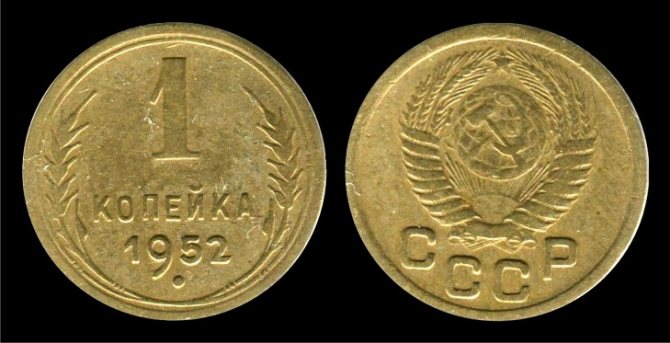
We list the most famous and valuable coins among the 1 kopeck denominations:
- 1963 with a higher position of the coat of arms - 35,000 rubles.
- 1958 with the number of ribbons equal to 15 - 50,000 rubles.
- 1952 - the aureole is missing from the image of the sun - 80,000 rub.
- 1925 - the pointed part of the sickle ends below the stylistic designation of the pole - 300,000 rubles.
- 1957 - the design of the coat of arms corresponds to another, 1956 and has 16 ribbons. The market price reaches 600 thousand rubles.
Valuable coins of the USSR from 1961 to 1991
In 1961 - 1962, a sufficient number of coins from 3 to 20 kopecks were minted. Then they were almost never made. The result is that they are now a rarity. Cost - from 1.7 thousand to 16 thousand rubles.
The most expensive coins are presented in the table.
| Year of issue | Name and features | Cost, in rubles |
| 1970 | 15 kopecks | 18 000 |
| 1990 | 5 kopecks with the letter M | 18 000 |
| 1990 | 10 kopecks with the letter M | 18 000 |
| 1991 | 20 kopecks without letters | 25 000 |
The following coins considered expensive were issued in the early 1990s. They were minted in different places back then. Today's price may depend on both the place of manufacture and the quantity. Thus, coins of 5 and 10 kopecks with the date 1990 are valued at 20 thousand rubles. Coins of 10 kopecks from 1991 usually sell for 3 thousand rubles.
| Year of minting | Name and features | Estimated cost, in rubles |
| 1970 | 15 kopecks | 18 000 |
| 1990 | 5 kopecks with the letter M | 18 000 |
| 1990 | 10 kopecks with the letter M | 18 000 |
| 1991 | 20 kopecks without letters | 25 000 |
And two more types of coins considered rare. These are 10-ruble, bimetallic. Those with the MMD monogram (1991) are valued at 30 thousand, the same ones, but with the inscription “Bank of the USSR” and the date 1922, are sold for 15 thousand rubles.
What coin defects are valued? How much can they be sold for?
Among numismatists there are collectors who are interested in coin defects. Some categories of marriages are rated very highly. Let's look at examples.
More often than others, a defect will occur - a split stamp. When the working stamp breaks due to wear, a raised line is left on coins passing through it. In the case of a complete split, such a line goes from edge to edge. Pennies with complete splits will be more expensive; the combination of this defect with a stamp fragment will also add value. Below are several examples with complete splits. They are estimated at 200-300 rubles.
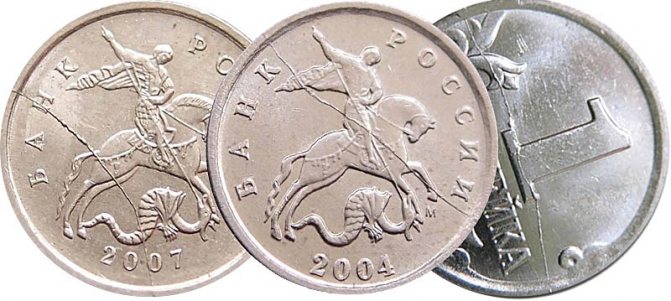
Examples of marriage “stamp split”
If a blank cut from a metal sheet partially falls under re-cutting due to a failure in the feed of the ribbon, then subsequently we can observe a defect on the minted coin, called a bite or moon. The value of such a marriage is determined by the size of the bite, as well as their quantity. Below are two examples.
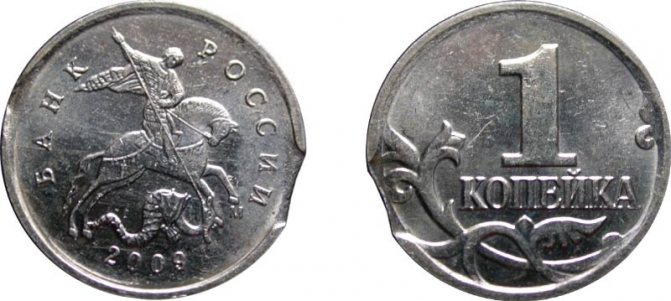
1 kopeck of 2009 with a microbite was valued at 211 rubles at auction.
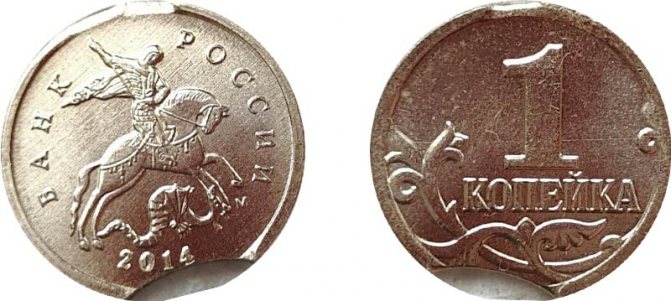
A 2014 copy with two bites, one of which is more impressive in size, was sold for 1,350 rubles.
The next coin has a trace of a stamp chip (note the bottom of the reverse). In 2021, a similar penny was sold for 1,200 rubles, but in 2021 there was no interest in this marriage even with a starting price of 600 rubles.

An example of a defect – a chipped stamp
The next marriage is incuse (“stuck”), it is very rare. Its cost can reach 20 thousand rubles. Due to the coin stuck in the minting unit, the image of one of the sides appears in a negative form.
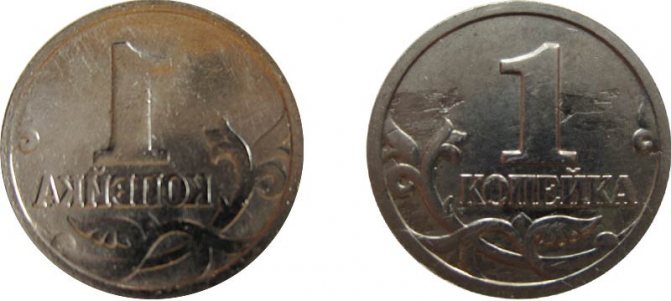
A copy valued in 2015 at 14,500 rubles.
Image displacements that occurred due to the shift of the workpiece during minting will cost around 500-600 rubles. With very strong displacements, the price can increase 3-4 times. See example:
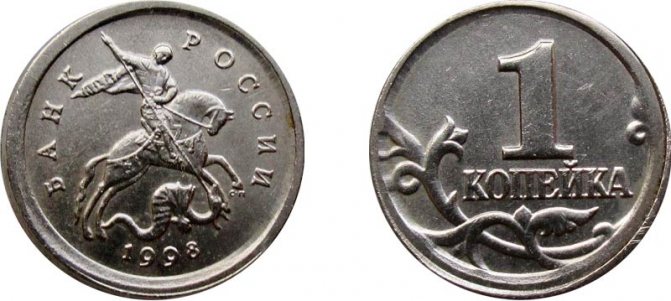
Under certain conditions, the image on the coin is poorly struck. If the marriage is local, then the interest will be minimal. But a strong unminted can be sold at a high price. The most extreme manifestations of this marriage cost more than 1000 rubles.
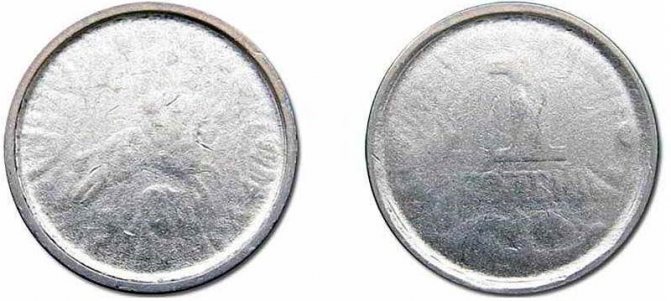
In numismatics, a rotation is a violation of the alignment between the obverse and the reverse. Usually this is a low-value defect, but if the rotation is 180 degrees, the price will rise to 600-1000 rubles. To correctly demonstrate the degree of rotation, we recommend taking a photo with the thread:
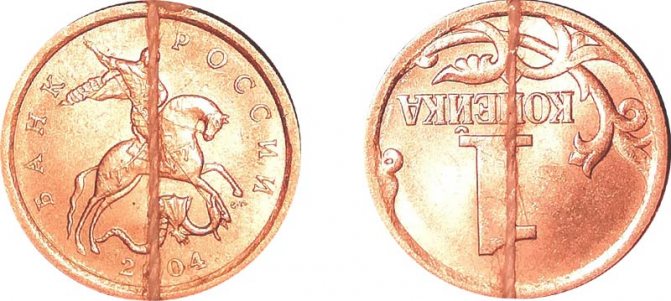
Bonus! The most expensive coins of modern Russia
Among the most expensive coins issued in modern Russia, the following are most valued by collectors:
| Denomination | Approximate price in rubles |
| 1 rub. 1997 MMD with wide edging | 2 000 – 4 000 |
| 1, 2, 5 rub. 1997 with glitter | 100-200 |
| 1 rub. 1998 MMD with wide edging | 2 000 |
| 50 kopecks 1999 | 100 |
| 2 rub. 1999 | 200-500 |
| 5 kopecks 2000 JV | 100-200 |
| 10 kopecks 2001 SP with transverse folds | 1 000 – 3 000 |
| 2 rub. 2001 “Gagarin” without MD sign | 10 000 – 15 000 |
| 5 kopecks 2002 without letters | 4 000 – 7 000 |
| 1 rub. 2003 | 25 000 |
| 2 rub. 2003 | 20 000 |
| 5 rub. 2003 | 18 000 |
| 5 kopecks 2003 without letters | 3 000 |
List of the most expensive commemorative coins of the USSR
Example: 1 R - denomination of one ruble, 50 k - denomination of a coin of 50 kopecks.
1965
- 1 R – 20 years of Victory
1967
- 10 to – 50 years of Soviet power (1917-1967)
- 15 to – 50 years of Soviet power (1917-1967)
- 20 to – 50 years of Soviet power
- 50 k – 50 years of Soviet power
- 1 R – 50 years of Soviet power
1970
- 1 R – 100 years of V. I. Lenin
1975
- 1 R – 30 years of Victory
1977
- 1 R 60 years of Soviet power (1917-1977)
- 1 R Games of the XXII Olympiad “Emblem”
1978
- 1 R – Games of the XXII Olympiad “Kremlin”
1979
- 1 R – Games of the XXII Olympiad “Monument to the Conquerors of Space”
- 1 R – Games of the XXII Olympiad “MSU”
1980
- 1 R – Games of the XXII Olympiad “Monument to Yu. Dolgoruky”
- 1 R – Games of the XXII Olympiad “Torch”
1981
- 1 R – 20 years of the first flight into space
- 1 R – Friendship forever
1982
- 1 R – 60 years of the USSR
1983
- 1 R – Karl Marx
- 1 R – 20 years of the first flight of a woman into space
- 1 R – Ivan Fedorov
1984
- 1 R – D. I. Mendeleev
- 1 R – A. S. Popov
- 1 R – A. S. Pushkin
1985
- 1 R – V. I. Lenin (1870 -1924)
- 1 R – 40 years of Victory (1941-1985)
- 1 R – For anti-imperial solidarity, peace and friendship
- 1 R – F. Engels
1986
- 1 R – International Year of Peace
- 1 R – M. V. Lomonosov
1987
- 1 R – 175 years since the Battle of Borodino “Monument to Kutuzov”
- 1 R – 175 years since the Battle of Borodino “Borodino Panorama”
- 1 R – K. E. Tsiolkovsky
- 1 R – 70 years of the October Revolution
- 3 R – 70 years of the October Revolution
- 5 R – 70 years of the October Revolution
1988
- 1 R – A. M. Gorky
- 1 R – L. N. Tolstoy
- 5 R – Monument to Peter I
- 5 R – St. Sophia Cathedral
- 5 R – Monument “Millennium of Russia”
1989
- 1 R – T. G. Shevchenko
- 1 R – M. Mussorgsky
- 1 R – M. Yu. Lermontov
- 1 R – Hamza Hakim-zadeh Niyazi
- 1 R – M. Eminescu
- 3 R – Anniversary of the earthquake in Armenia
- 5 R – Cathedral of the Intercession on the Moat
- 5 R – Registan
- 5 R – Annunciation Cathedral
1990
- 1 RmA. P. Chekhov
- 1 R – P. I. Tchaikovsky
- 1 R – G. K. Zhukov
- 1 R – Francis Skaryna
- 1 R – Janis Rainis
- 5 R – Grand Palace
- 5 R – Assumption Cathedral
- 5 R – Matenadaran
1991
- 1 R – Alisher Navoi
- 1 R – P. N. Lebedev
- 1 R – S. S. Prokofiev
- 1 R – Mukhtumkuli
- 1 R – K. V Ivanov
- 1 R – Nizami Ganjavi
- 3 R – 50 years of the defeat of German troops near Moscow
- 5 R – Archangel Cathedral
- 5 R – State Bank Building
- 5 R – Monument to David of Sassoun
- 1 Р – XXV Olympiad “Javelin Throw”
- 1 R – XXV Olympics “Cycling”
- 1 R – XXV Olympics “Weightlifting”
- 1 R – XXV Olympiad “Wrestling”
- 1 R – XXV Olympiad “Running”
- 1 Р – XXV Olympiad “Long Jump”
Where to sell expensive USSR coins
The most important thing is to get information about the cost of available coins from different sources, only then choose the only option, and not rush to the first offer! There are several simple ways to sell valuable coins:
- Find out the cost on sites popular among numismatists and collectors, choose the best offer for yourself.
- Offer coins to those who place advertisements for their purchase on advertisement sites (it is not necessary that the advertisement will indicate exactly the coins that you have; perhaps the collector will be interested in your offer).
- Using an online map of the city (Yandex, Google), find pawn shops that buy antiques and contact them.
- Place advertisements for the sale of coins on websites (Avito, Yula, etc.).
- Buyers of antiques can walk around the metro with corresponding posters, but this is not the best option.
- Find numismatist communities on social networks, contact users or the group admin with your suggestions.
The cost of Soviet coins depends on many factors. This is the time of manufacture, features, degree of rarity. It is perhaps difficult to find a family in Russia that does not have old coins stored somewhere. Sometimes people don’t even know about it, and having accidentally discovered it, they don’t imagine that if they try, they can replenish the family budget using the find.
Interesting: All the ways to exchange change for banknotes - how to get rid of coins profitably!
What to do if Soviet coins are found? Of course, everything depends on your own desire. Sometimes they are simply thrown away. It happens that they try to sell quickly (if they know that they can be bought). True, they are often sold at bargain prices, not realizing that just a few small metal disks with printed denominations and other data can be of serious help. To do this, you simply need to report your find on sites where numismatists communicate.
